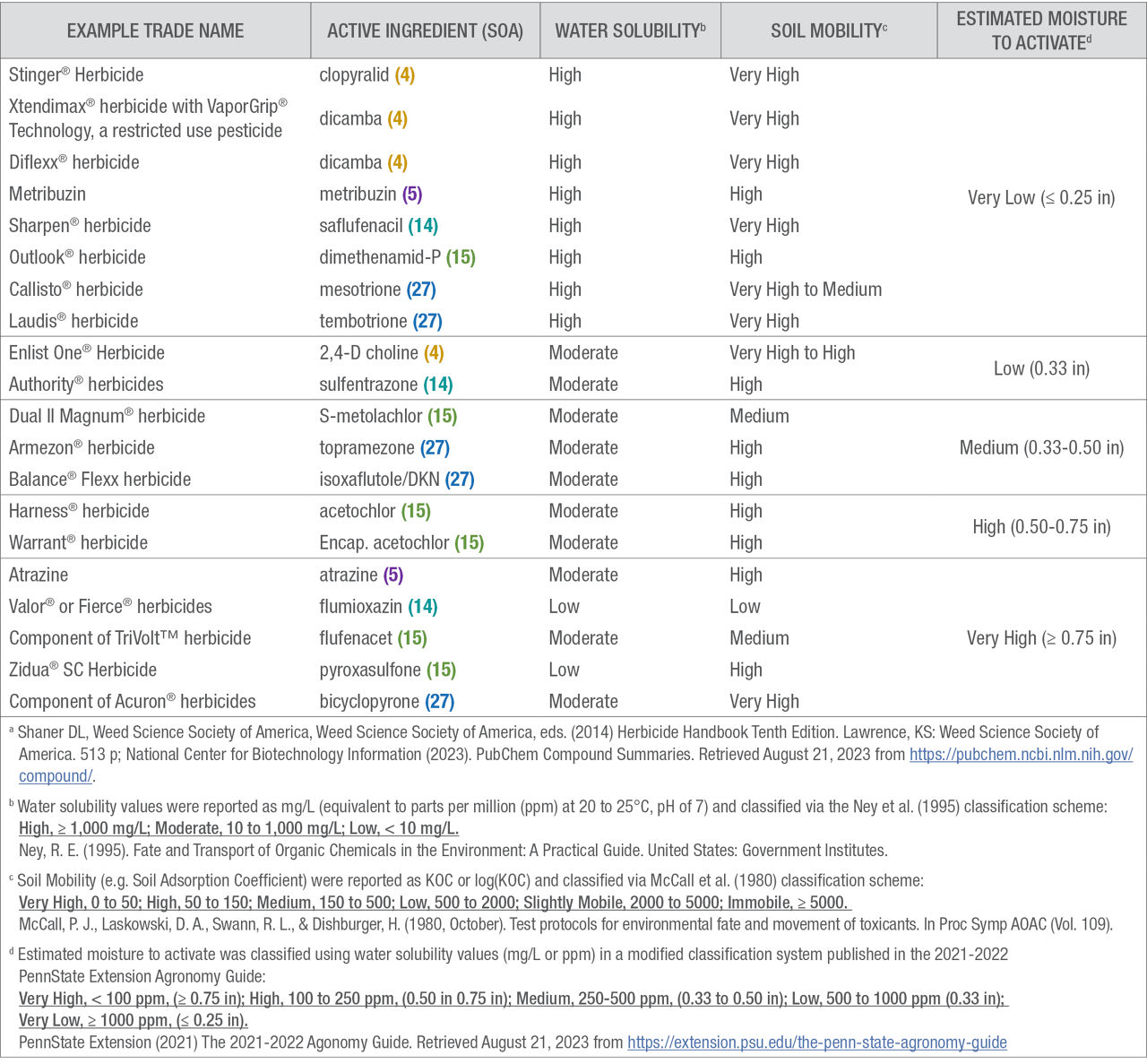Conditions Affecting PRE Herbicide Activation
October 30, 2023
Introduction
During this last season, many regions throughout the Midwest experienced drier soil conditions due to reduced rainfall. This has led to a lot of questions about performance issues across many preemergence herbicide products, regardless of brand name or chemical manufacturer. To help answer these questions, a summary on herbicide activation is provided below.
Activation of Soil-applied Residual Herbicide
- For most residual herbicides to work, the active ingredient must move from the soil surface into the rooting zone where weed seeds are present (usually approximately the top 0.25 to 0.75 in of soil).
- This process requires water to occur, usually via rainfall or irrigation. Producers who opt to use pre-plant incorporation (PPI) tillage systems can mechanically move the herbicide to the right soil depth but will still need adequate soil moisture (rain or irrigation water) to ensure the herbicide enters into soil solution.
- Once a herbicide is within the soil solution (e.g. soil water) it is available to be taken up by the germinating weed seedlings’ roots.
Because of the importance of water in these processes, the timing of rainfall and amount of rain (e.g. X in of rain within 7 to 14 days) have the largest impact on herbicide activation.
Other Factors to Consider:
Several other factors that can also influence the performance of soil-applied residual herbicides include:
1.SOIL:
- Soil texture
- Soil organic matter (SOM) percentage
- Soil moisture present at application
2.WEED SPECIES:
- Seed size
- Seed sensitivity to a given herbicide
3.HERBICIDE:
- Starting dose of the herbicide available
- Reactivation potential
- For example: herbicide products containing isoxaflutole (e.g. Balance Flexx® Herbicide, Trivolt™ Herbicide) can reactivate with approximately 0.50 in of rain to control later-emerging weeds.
- How well a herbicide moves into soil solution (water solubility)
- How likely, or strongly, a herbicide will bind to soil particles (soil mobility)
Why It Matters:
- Water solubility measures how likely a herbicide is to dissolve into a water solution.
- Herbicides which have higher water solubility tend to need less rainfall to fully activate than herbicides which have a low water solubility.
- Soil mobility measures how strongly a herbicide binds to soil particles.
- Soil particles are negatively charged and can adsorb herbicides to their surfaces. The strength of this binding depends primarily on the herbicide, and soil type/texture.
- A herbicide will not be readily available to detach and reenter soil solution if it binds too tightly to a soil particle, therefore limiting its soil movement and bioavailability.
- Inversely, a herbicide can enter or re-enter soil solution more readily if it binds weakly to soil, increasing its bioavailability.
Comparing Herbicides:
- A summary of common soil-residual herbicides is provided on the following page. Herbicide active ingredients were classified based on their water solubility and soil mobility using published classification guides within academic literature. An estimation of rainfall requirements is also provided using a modified scale published by PennState Extension in 2021.
- It’s worth noting that in general, the higher the water solubility and soil mobility, the more likely a product is to move within the soil profile. While this can aid in activation, it can also result in performance issues if too much rain is received.
- For example, dicamba is highly soil-mobile and water-soluble. In the Midwest, dicamba can provide residual control for up to 14 days of or until the first significant rainfall event is received.
- As a good rule of thumb, rainfall events totaling approximately 0.75 in within 7 to 10 days of application will provide ideal conditions for most herbicide products.
- If you have any questions or concerns about your herbicide selection, or the contents of this handout, please contact your local Bayer Crop Science Crop Protection representative.
Table 1. Water solubility and rainfall requirement estimates for common soil-residual herbicides used in either Corn or Soybeans.a

1123_289202
You may also like...
Here are some articles that may also be of interest to you